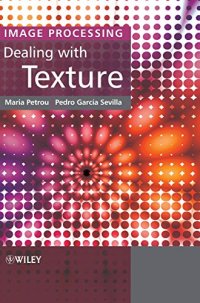
Ebook: Image Processing: Dealing With Texture
Techniques for the analysis of texture in digital images are essential to a range of applications in areas as diverse as robotics, defence, medicine and the geo-sciences. In biological vision, texture is an important cue allowing humans to discriminate objects. This is because the brain is able to decipher important variations in data at scales smaller than those of the viewed objects. In order to deal with texture in digital data, many techniques have been developed by image processing researchers.
With a wholly practical approach and many worked examples, Image Processing: Dealing with Texture is a comprehensive guide to these techniques, including chapters on mathematical morphology, fractals, Markov random fields, Gabor functions and wavelets. Structured around a series of questions and answers, enabling readers to easily locate information on specific problems, this book also:
- provides detailed descriptions of methods used to analyse binary as well as grey texture images
- presents information on two levels: an easy-to-follow narrative explaining the basics, and an advanced, in-depth study of mathematical theorems and concepts
- looks at ‘good’ and ‘bad’ image processing practice, with wrongly designed algorithms illustrating ‘what not to do’
- includes an accompanying website, setting out all algorithms discussed within the text.
An ideal self-teaching aid for senior undergraduate and Masters students taking courses in image processing and pattern recognition, this book is also an ideal reference for PhD students, electrical and biomedical engineers, mathematicians, and informatics researchers designing image processing applications.